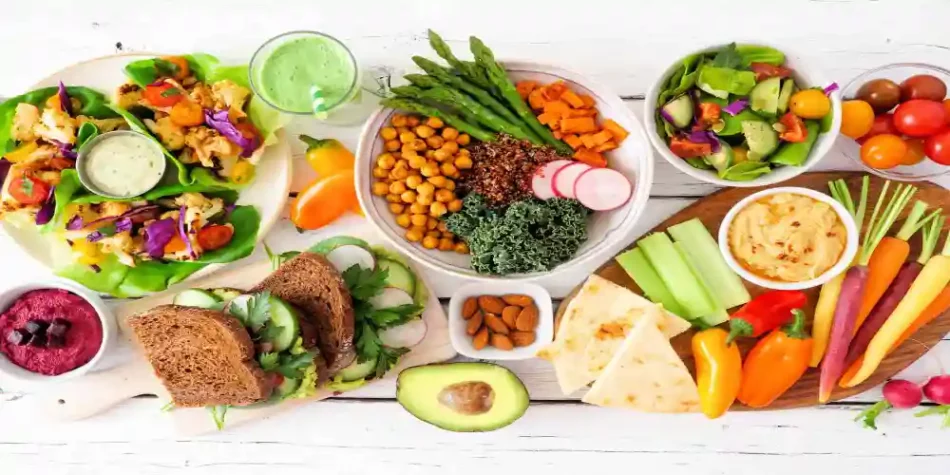Food is one of the basic necessities to sustain life, provide energy and stimulate growth. It contains nutrients, substances essential for a healthy body.
A balanced diet provides all the nutrients you need for good health. Eating a healthy diet can help prevent certain chronic health conditions and support the management of others.
Nutrients
Nutrients are molecules used by living things to survive, grow and reproduce. Organisms also require nutrients to detect and respond to environmental surroundings, move, excrete wastes and respire (breathe). There are six classes of essential nutrients: carbohydrates, lipids (fats), proteins, water and vitamins. Foods can also contain non-nutrients such as fiber, phytochemicals and zoochemicals.
The body gets most of its nutrients from healthful eating patterns. Eating a balanced diet that includes lean proteins, vegetables and fruits helps people meet their nutrient requirements. Individual nutrient needs vary by age, gender and activity level.
Carbohydrates, lipids and proteins are called macronutrients because they are needed in large amounts and provide bulk energy (in the form of Calories). The body uses these nutrients to maintain normal function and support growth. Diets low in carbohydrates, lipids and proteins can lead to nutritional deficiencies. Diets high in saturated fat, sodium and added sugars can increase the risk of certain health conditions such as heart disease, high blood pressure and obesity.
Calories
The human body needs energy in order to function and live. We get this energy from the food we eat. The amount of energy we need is determined by the number of calories in the food and drinks we consume.
A calorie is a measure of the amount of heat a food gives off when it is broken down by the body. This energy is used for many metabolic processes in the body. If we consume more calories than we need, the excess is stored as fat.
Some foods are high in calories but provide few nutrients, these are often called “empty calories.” They include cakes, cookies, candy, some condiments, and alcohol. Other foods are nutrient-dense and low in calories, such as vegetables, whole grains, fruits, nuts, seeds and lean meats. These are considered the building blocks of a healthy diet. They are low in sodium, added sugars and saturated fat and contain vitamins, minerals and fiber.
Fats
Fats are a type of nutrient that provide energy and help keep the body working properly. They can also increase feelings of fullness and satisfaction after a meal. Fats are a source of essential fatty acids and are important for heart health.
Fats in the diet come from both animal and plant sources. Healthy fats are monounsaturated and polyunsaturated fats, which are found mostly in plant foods like avocados, olives, nuts, seeds and vegetable oils. Unhealthy fats are saturated and trans fats, which are found mainly in animal products like meat and dairy.
It’s important to replace unhealthy fats with unsaturated fats. Try adding foods like avocado, nut or seed butter, fish and vegetables to your meals. Also choose oils for cooking that are lower in saturated and trans fats like canola, sunflower or olive oil. All fats are high in calories, so be sure to watch portion sizes.
Carbohydrates
Carbohydrates provide the body with a quick source of energy. They are used in all cells and are converted to glucose (blood sugar) or glycogen for immediate use, or stored as fat for later use. Carbohydrates are found in a wide variety of foods, both healthy and unhealthy. Foods rich in carbohydrates include grain foods; vegetables; fruits; beans, peas and lentils; and dietary fiber. Carbohydrates are classified based on how many sugar units they contain: Single-unit sugars, such as glucose, fructose and galactose, are known as monosaccharides; disaccharides, such as sucrose and lactose; and oligosaccharides, which are three to ten monosaccharide units joined together by a glycosidic bond.
The healthiest sources of carbohydrate are whole grains, beans, low-fat milk and dairy, and fresh fruits. These foods provide vitamins, minerals and dietary fiber. It is important to limit added sugars and refined carbohydrates, which provide fast energy but few other nutrients.
Proteins
Proteins are complex molecules that form the building blocks of cells. They are made of amino acids strung together in a long chain and provide an important source of energy.
Protein is present in every cell, and an adequate intake is essential for keeping muscles, bones and tissues healthy. Proteins also help regulate many bodily functions, including cellular metabolism and immunity, and are the basis for many important biochemical pathways.
There are 20 amino acids that make up proteins. Nine of them (isoleucine, leucine, valine, lysine, methionine, phenylalanine, tryptophan and histidine) cannot be made by the body and must be consumed in food. These are called the essential amino acids.
Some foods are complete proteins, which contain all the essential amino acids. These include animal products, soy foods, quinoa and some plant foods (beans, nuts, seeds). Others are incomplete proteins, which lack one or more of the essential amino acids. People can combine incomplete protein sources to create meals that provide all the essential amino acids.
Minerals
Most people think of diamonds and gold when they hear the word minerals. But they are not the only minerals that are important. Highways and buildings, fertilizers, salt, vitamins and medicines, computers and other electronic devices, cars and kitchenware — almost all the products of modern society rely on mineral resources in one way or another.
A mineral is a natural solid substance with a fairly well-defined chemical composition and a specific crystal structure. It is inorganic and forms from geological processes. It may be composed of a single element or a mixture of elements or compounds.
Besides its characteristic chemical composition and crystal structure, a mineral also has physical properties that distinguish it from other substances. These properties include hardness, lustre, diaphaneity, streak, cleavage, tenacity, specific gravity, radioactivity and magnetism. Some minerals are colorful, such as the pseudochromatic bornite and labradorite. Others have unique optical properties such as asterism, iridescence and chatoyancy.

